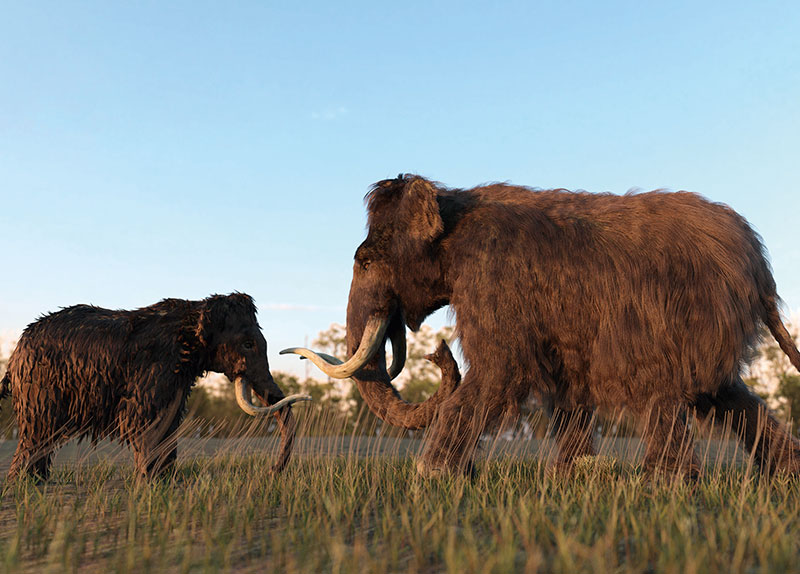 What’s This About?
What’s This About?De-extinction, the revival of extinct species through advanced genetic technologies, has long been an idea that sparks both excitement and controversy. As breakthroughs in genetic engineering, particularly CRISPR-Cas9, breathe new life into the once-fringe concept, scientists are seriously exploring which lost species to revive and what impact those animals could have. But should humanity bring extinct animals back to life?
Constructive
Pro Finn
Should de-extinction become a reality, it would offer a groundbreaking opportunity to undo much of the damage inflicted by humanity. One compelling reason for de-extinction is its potential to restore ecosystems disrupted by the loss of keystone species – organisms that play a critical role in maintaining ecological balance. For example, woolly mammoths had once helped sustain Arctic grasslands by trampling shrubs, dispersing seeds, and distributing large amounts of nutrients via their dung. Reviving these extinct grazers may restore these grasslands, creating habitats for other organisms to thrive. It may also help combat climate change. Research at the Pleistocene Park in Siberia has shown that introducing large herbivores can slow permafrost thaw – thus reducing the release of greenhouse gases – and maintain grassland ecosystems, which are better for carbon sequestration than tundra.
Con Alice
While de-extinction is an intriguing concept, it poses significant ethical concerns regarding the manipulation of life, the suffering of cloned animals, and the prioritization of extinct species over living ones. Cloning and genetic engineering often involve high rates of failure and suffering for animals involved. For instance, the first and only successful attempt to clone the extinct Pyrenean ibex in 2003 resulted in a calf that died within minutes due to lung defects. Such a result was not unexpected, as the cloning process is known to result in genetic malformations, cancer, or a shortened lifespan. These outcomes raise questions about whether the potential benefits justify the ethical costs. Some might even argue that extinction is a natural process and humans shouldn’t “play God” by reviving species that nature has already phased out.
Rebuttal
Pro Finn
As I mentioned before, de-extinction offers a chance to rectify past harms. Furthermore, while challenges exist, the benefits of de-extinction outweigh them. One such benefit is that it could inspire public interest in conservation and environmental science, fostering greater appreciation for living species and the planet’s biodiversity. For example, the return of iconic species like the dodo could serve as a powerful reminder of the consequences of human actions and encourage support for conservation efforts. Reintroducing extinct species could also boost ecotourism and generate funding for conservation programs. After all, people would eagerly pay to see woolly mammoths and other restored species. Moreover, emerging de-extinction techniques can help endangered species by restoring genetic diversity in small populations. Cloning-based genetic modifications could further eliminate vulnerabilities that threaten a species’ survival.
Con Alice
There is no guarantee that bringing back extinct species would be beneficial. Research suggests that other organisms may have filled the roles and positions these extinct species once held or that the ecosystems have adapted in ways that make reintroducing these species unnecessary or even harmful. For instance, a revived woolly mammoth might compete with existing herbivores like reindeer and musk oxen for resources, destabilizing fragile Arctic ecosystems. In addition, de-extinction may create a false sense of security about extinction. If people believe extinct species can simply be “brought back,” there may be less motivation to address critical threats like habitat destruction and climate change. Rather than reviving long-dead species, our efforts should focus on preserving those still alive and addressing the root causes of biodiversity loss.
Judge’s Comments
De-extinction presents both exciting opportunities and ethical challenges. While it may restore lost biodiversity and aid conservation, it raises concerns about ecological balance and the impact of reintroducing species in a world where they no longer belong. Ultimately, we must carefully weigh its benefits and risks to ensure responsible scientific progress.